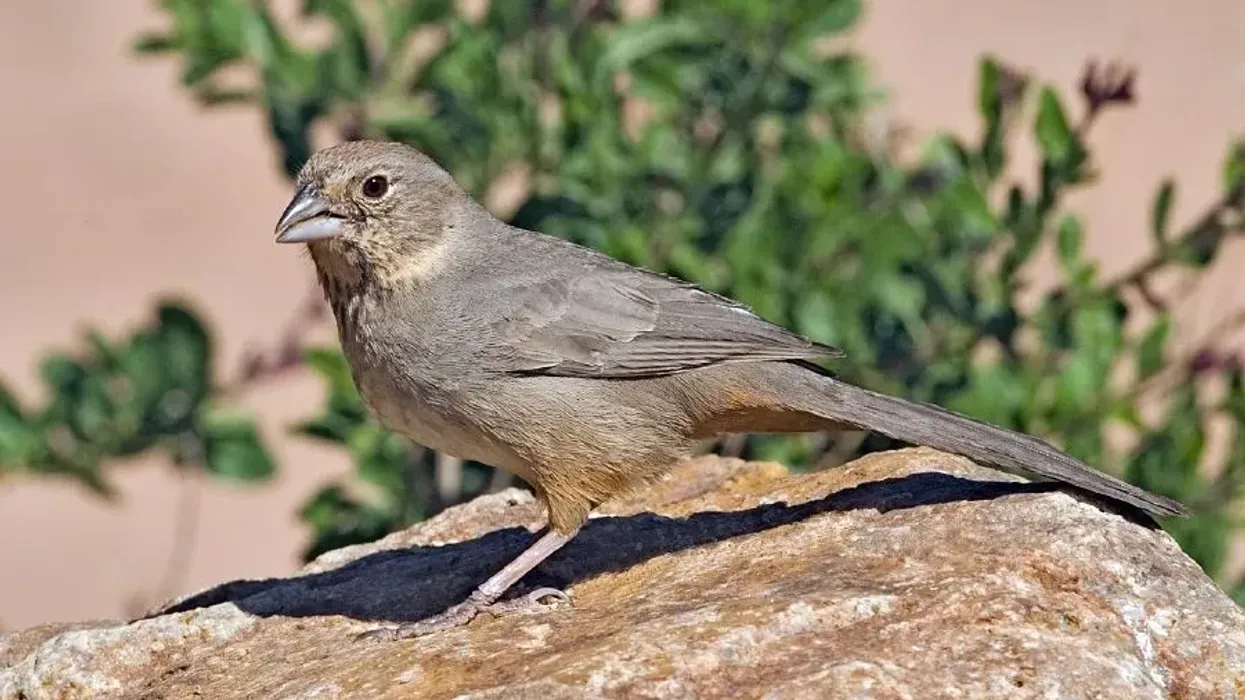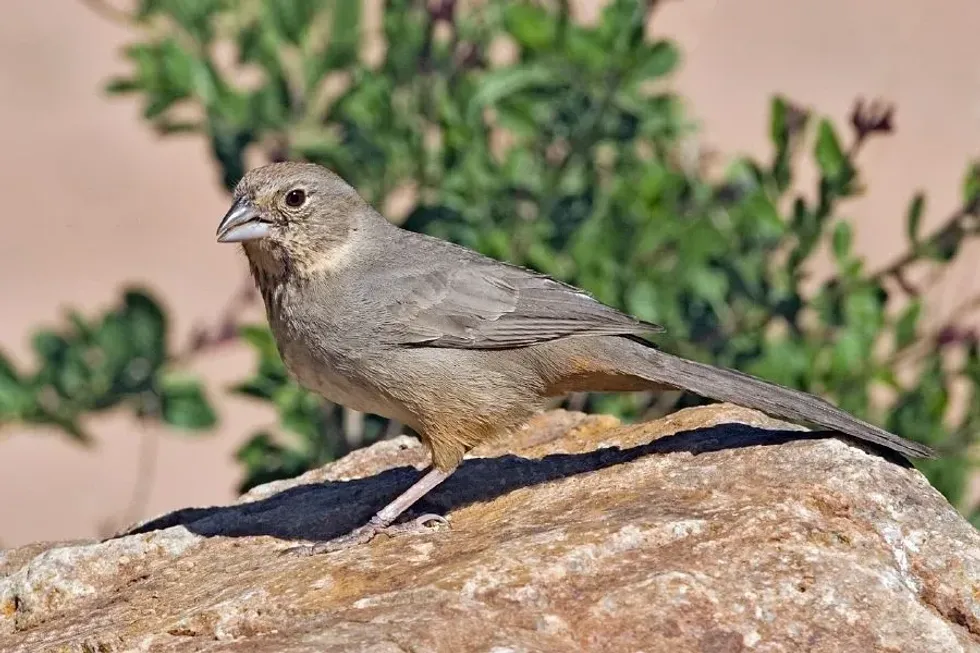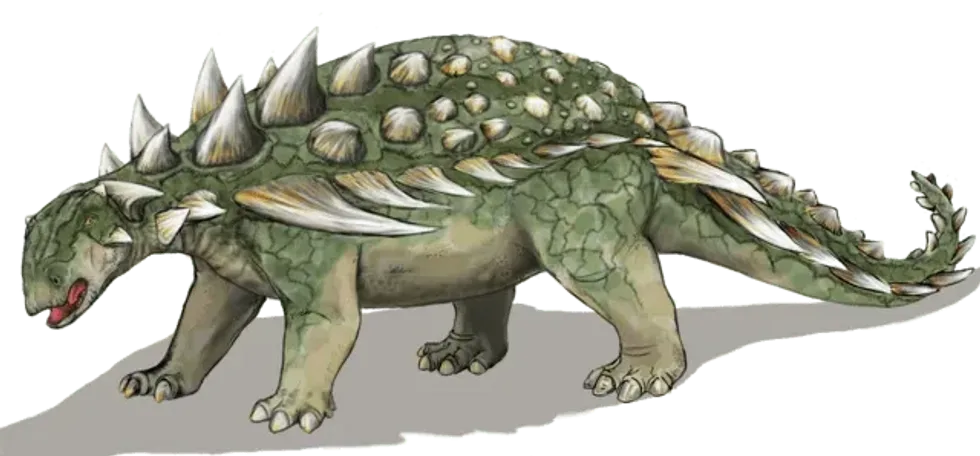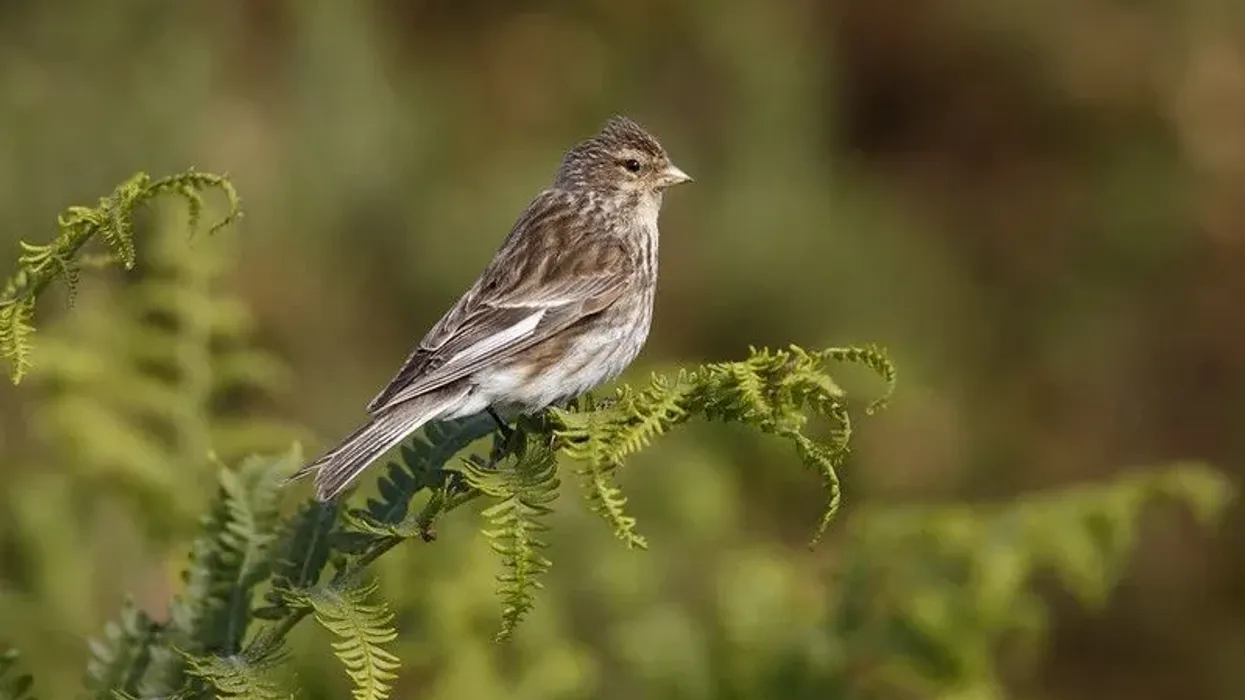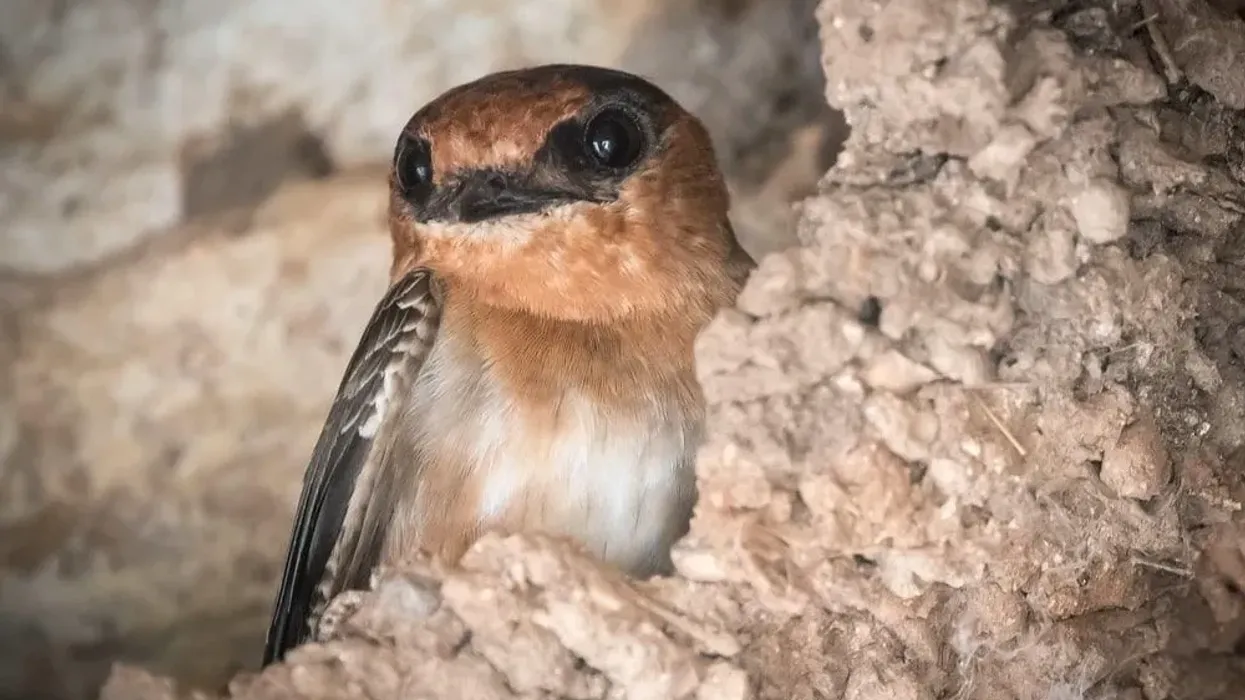The canyon towhee (Melozone fusca) is a North American bird of the order Passeriformes, family Passerellidae. This family consists of all the New World sparrows. Hence, canyon towhees and other towhees can also be considered to be large sparrows. Canyon towhees have brown plumage and look very similar to the California towhee, but their ranges are different.
Canyon towhees are mostly ground-dwelling and can be found in a range of habitats including brushy areas, desert grasslands, suburban areas, and so on. They feed on several kinds of invertebrates and seeds.
These birds can also be seen feeding on the bird feeders in people's backyards. While foraging, canyon towhees jump up and kick both feet to find food, a behavior they share with other kinds of towhees.
The different calls of canyon towhees are quite pleasing to hear. They carry out their nesting twice a year and build their nests above the ground using a wide range of plant materials.
To learn more about the canyon towhee, keep reading! You can also check out frigatebirds and crowned eagles.
Canyon Towhee Interesting Facts
What type of animal is a Canyon Towhee?
The canyon towhee is a North American bird. This species of towhee was considered to be the same as the California towhee and together both were referred to as the brown towhee birds.
What class of animal does a Canyon Towhee belong to?
Canyon towhees belong to the class Aves. They are a part of the order Passeriformes, family Passerellidae. The Passerellidae family is also known as the family of New World sparrows.
How many Canyon Towhees are there in the world?
According to the International Union for Conservation of Nature or IUCN, the population trend of this species of towhees is considered to be stable with no severe population fragmentation. Hence, even though the exact number of individuals is not known, it can be inferred that the population range of this bird is widespread.
However, some surveys do show a decline in their population.
Where does a Canyon Towhee live?
Canyon towhees are non-migratory and can be seen in their usual range all year round. The canyon towhee range includes New Mexico, Arizona, southern Colorado, Texas, and Oaxaca.
Unlike the eastern towhees, which is a similar species and lives along the eastern section of North America, the range of canyon towhees is not that far east and is limited to the southwest desert.
What is a Canyon Towhee's habitat?
Canyon towhees can be found in a wide range of habitats. They can be seen in desert grasslands, brushy regions, chaparrals, shrubs, woodlands, and forests with pinyon, juniper, pine, and oak trees. In Mexico, their habitat is situated at a comparatively higher elevation. They are also seen in suburban areas.
Who does a Canyon Towhee live with?
Canyon towhees are most commonly seen foraging on the ground, alone or in pairs. They are not aggressive towards other members of their species and can co-exist peacefully with each other.
How long does a Canyon Towhee live?
Canyon towhees can live for nearly 13 years in the wild.
How do they reproduce?
These birds display monogamous behavior and usually pair for life. Once mating is successful, the female canyon towhee lays up to six eggs, which are incubated by the female for nearly 11 days after which the eggs hatch.
Both parents are involved in taking care of the young nestlings. The young birds fledge the nest, sometimes even before they learn to fly.
What is their conservation status?
The conservation status of the canyon towhee has been marked as of Least Concern by the International Union for Conservation of Nature. These birds mainly face a threat from loss of habitat.
Canyon Towhee Fun Facts
What do Canyon Towhees look like?

The canyon towhees are fairly large sparrows with rounded wings, thick and short beaks, and considerably long tails. These birds do not display any significant sexual dimorphism and the male and female birds look pretty much the same.
Their plumage is a plain shade of brown, with rusty undertail coverts, and a reddish crown. The underparts of these birds appear whitish. The young canyon towhee birds lack the reddish crown and have faint stripes.
How cute are they?
Canyon towhees can be considered to be a cute bird species. Apart from the appearance of these sparrows, their songs and calls also add to their beauty.
How do they communicate?
These birds mainly communicate through visualizations, different calls, and even songs. Their songs usually last for one or two seconds and have changes in tempo and pattern. A canyon towhee call is usually low-pitched.
However, pairs can communicate with each other using high-pitched tones. These birds also use high-pitched calls when alerting others of danger. Pairs also fluff their feathers and bob their heads in front of one another.
How big is a Canyon Towhee?
The length of a canyon towhee bird is usually 8 in (20.3 cm) Their tails are pretty long and can measure between 3.2-4.3 in (8-11 cm). The California towhee, which is a similar species, is slightly greater in length than the canyon towhee measuring between 8.2-9.8 in (20.8-24.8 cm).
How fast can a Canyon Towhee fly?
Canyon towhees are most commonly seen running on the ground, rather than flying. They usually do not fly long distances and are known to take slow and short flights.
How much does a Canyon Towhee weigh?
The weight of a canyon towhee is between 1.2-2.3 oz (34-65.2 g).
What are the male and female names of the species?
The male and female birds of this species are known as male canyon towhees and female canyon towhees.
What would you call a baby Canyon Towhee?
Baby canyon towhees are known as chicks or nestlings.
What do they eat?
These birds have an omnivorous diet and feed on different kinds of seeds, insects, and other small invertebrates. Some of the common seeds included in their diet are sorrel, lupine, grass, and pigweed. They eat insects like grasshoppers and invertebrates like snails, spiders, and millipedes. At feeders, canyon towhees, like other towhee species, also eat sunflower seeds.
Are they poisonous?
Canyon towhees are not poisonous.
Would they make a good pet?
The canyon towhee (Melozone fusca) is protected under the Migratory Bird Treaty Act in the United States. Hence, one is not allowed to keep this species of birds as pets, unless a special license is obtained.
Did you know...
While foraging on the ground, canyon towhees eat gravel as well. They do this so that the gravel helps in grinding the seeds they have eaten.
Analysis of mitochondrial DNA led to the splitting of the California towhee and canyon towhee into two separate species, which were both referred to as the brown towhee before.
The Canyon Towhee's song
The canyon towhee song starts with a call note and can last for up to two seconds. It usually sounds like 'chili-chili-chili' and consists of up to eight syllables which are two-parted. Though overall this outline is followed by the birds, there can be variation in the pattern and tempo of the song.
The Canyon Towhee's nest
Canyon towhees are most commonly known to nest in shrubs and trees in hidden areas. Their nests are built at a height of between three and 12 ft above the ground and are strongly supported by any trunk or branches.
The nesting behavior of this species is also quite special, as they tend to build their nest during the rainy seasons to get a lot of nesting material and insects. A canyon towhee is known to make its nest using plants like yucca, elderberry, pinyon pine, and juniper.
The nest can also contain mustard and daisy flowers.
Each nest measures 4 inches across and has a depth of 3 inches. Unlike the canyon towhee, some species of the towhee, like the Eastern towhee mostly nest on the ground.
Here at Kidadl, we have carefully created lots of interesting family-friendly animal facts for everyone to discover! Learn more about some other birds including golden pheasant facts and common buzzard facts.
You can even occupy yourself at home by coloring in one of our free printable Canyon towhee coloring pages.

